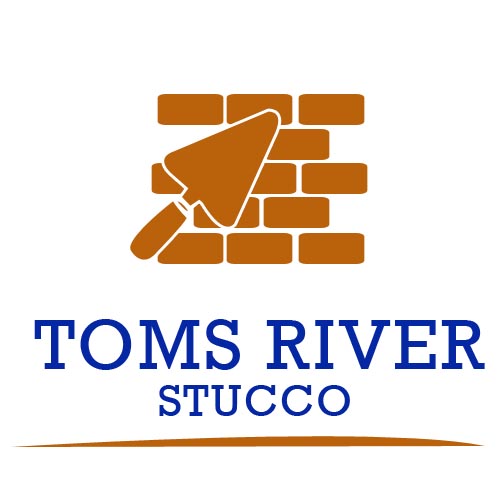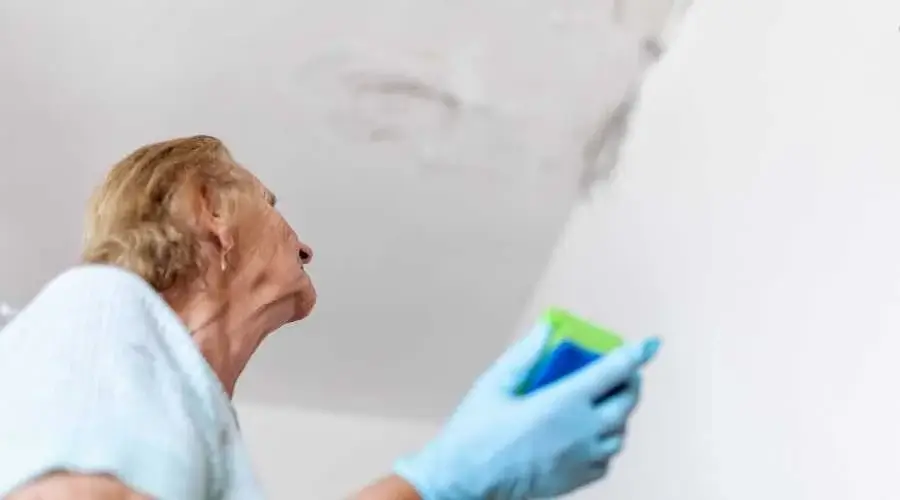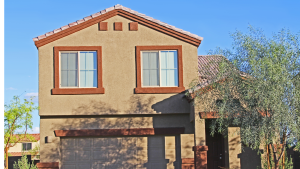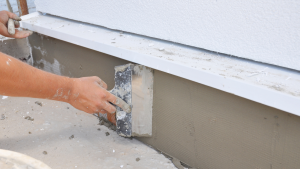Water penetration through stucco might be a serious issue. While stucco siding is an enticing option for home siding due to its style, several issues may result in water infiltration if installed improperly.
Mold and other water damage issues may be caused by stucco water penetration. Thus it is vital to repair it as soon as possible. Understanding how stucco water intrusion happens is the first step in preventing and dealing with it if it does in your home.
How Can Water Infiltrate Stucco?
Stucco is intended to be a strong and seamless siding option that can handle water without issue, so how can stucco water penetration happen? Direct absorption, cracks, or incorrect installation may all cause water to leak through stucco siding.
Direct Infiltration
Stucco is intended to be watertight when sealed, although it does not always hold up. Many factors might cause water to penetrate the stucco surface directly, resulting in an escalating stucco water intrusion issue. Once the water has penetrated the surface, wicking may lead it to permeate quite profoundly.
Water may infiltrate stucco when it is in constant touch with moisture. If the surface is not always maintained moist, it should be alright in the elements. Water, on the other hand, can get inside. If sprinklers mistakenly keep the walls moist or any other source of constant water, you may be dealing with stucco water penetration.
Entering Through Cracks
Naturally, stucco is only effective as a water barrier when it is strong and unbroken. If cracks happen for whatever reason, they may allow water to enter. They may cause swelling and movement once inside, resulting in wider openings that allow more water to enter.
Cracks may arise due to a multitude of factors. When the façade of your home changes over time, little cracks may appear. By itself, this is not a problem. Structural issue. It may, however, allow water to enter and produce mold and other issues.
Improperly Installed Flashing
Stucco may provide a strong barrier but cannot protect your whole house. Your stucco siding will come into touch with windows, the underhang of your roof, and other fixtures and structures at different locations. Moisture is kept out of these locations with the use of flashing and moisture barriers.
Poor installation, on the other hand, may result in stucco water penetration in some areas. Remember that even a little water may cause substantial harm over time.
What Factors Can Contribute to Water Intrusion?
A variety of factors may cause water infiltration. Various installations on the exterior of your property, the growth of plants on the stucco surface, and some other things.
It’s important to know about these things’ potential threats ahead of time. They might be causing undetectable damage to your home for years, eventually causing mold and rot. Water penetration may be highly harmful, so check these key aspects to protect your stucco siding.
Planters and Plants Too Close to Walls
Plants that are too near to external walls may rapidly cause severe problems. The basic reality is that soil holds a lot of moisture. Moisture will be progressively carried inside if dirt touches your stucco siding.
Planters, flowerbeds, and garden boxes that are right against the side of your house might cause catastrophic damage. Any form of plant that grows too near your siding might produce an abnormally wet environment that is harmful to the long-term preservation of your siding.
Light Fixtures
The most prevalent cause of stucco water penetration is outside light fixtures. These include drilling a hole in the stucco for the light fixture box, often needing to be more sealed with a moisture barrier. As a result, rainfall may readily penetrate the inside of the walls.
Light fixtures are the most prevalent problem, but they are far from the only one. A similar issue might arise in a variety of external scenarios. Any exterior faucet might lead to water penetration. Water may enter the home if a deck or patio needs to be properly separated.
You may have a similar issue if you have different siding materials on other parts of your property. Because each kind of siding has its rules, it may take work to maintain any such seam correctly. Having your siding properly done may assist you in avoiding this problem.
Ivy and Other Growth
Is ivy growing on your stucco siding? It may seem to be lovely, yet it may be causing damage to your property. Ivy is a plant that attaches itself to walls through rootlets. These projections may pierce the stucco’s surface, allowing moisture to enter.
Ivy may cause serious damage and allow significant moisture infiltration over time. Including ivy is critical since most people don’t think an attractive plant can harm but don’t rule out other potentially deadly plants.
Moss may do just as much, if not more, damage to your stucco siding. Its roots may reach deep below the surface, letting moisture enter and spread through the walls. While homeowners are less likely to let moss grow unrestrained on the side of their property, you must immediately limit the damage.
Deal with Stucco Water Intrusion the Right Way
Do you believe your home has stucco water intrusion? If so, call Toms River Stucco to learn more about your options. We can remove and repair damaged stucco, apply treatments to help prevent future issues and provide various siding solutions.




